 Website:
Alcon
Website:
Alcon
Catalog excerpts
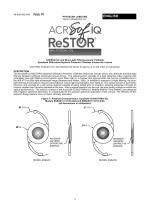
PHYSICIAN LABELING Alcon Laboratories, Inc. STERILE UV and Blue Light Filtering Acrylic Foldable Apodized Diffractive Aspheric Posterior Chamber Intraocular Lenses CAUTION: Federal (U.S.) law restricts this device to sale by or on the order of a physician. DESCRIPTION The AcrySof® IQ ReSTOR® Apodized Diffractive Posterior Chamber Intraocular Lenses (IOLs) are ultraviolet and blue light ltering foldable multifocal intraocular lenses (IOLs). The optical portion consists of a high refractive index material with proprietary blue light ltering chromophore which lters light in a manner that approximates the human crystalline lens in the 400-475 nm blue light wavelength range (Boettner and Wolter, 1962). In addition to standard UV-light ltering, the bluelight ltering chromophore reduces transmittance of blue light wavelengths (see Table 2). The optical portion is symmetric biconvex and consists of a soft acrylic material capable of being folded prior to insertion, allowing placement through an incision smaller than the optic diameter of the lens. After surgical insertion into the eye, the lens gently unfolds to restore the optical performance. The anterior surface of the AcrySof® IQ ReSTOR® IOL Models SN6AD1 and SN6AD3 are designed with negative spherical aberration to compensate for the positive spherical aberration of the cornea. The effect(s) of this aspheric design feature have not been clinically assessed. Figure 1: Physical Characteristics, AcrySof® IQ ReSTOR® IOL Models SN6AD1 (+3.0 D Add) and SN6AD3 (+4.0 D Add) (all dimensions in millimeters)
Open the catalog to page 1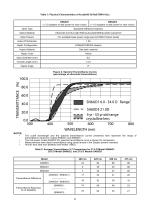
Table 1: Physical Characteristics of AcrySof® IQ ReSTOR® IOLs SN6AD1 (+ 3.0 diopters of add power for near vision) SN6AD3 (+ 4.0 diopters of add power for near vision) Optic Type Apodized Diffractive Aspheric Optics Material Ultraviolet and blue light ltering Acrylate/Methacrylate Copolymer Optic Powers For available base power range see ALCON® Product Guide Haptic Conguration STABLEFORCE® Haptics Haptic Material Haptic Color Haptic Angle 0º Figure 2: Spectral Transmittance Curves (percentage of ultraviolet transmittance) The cutoff wavelength and the spectral transmittance curves presented...
Open the catalog to page 2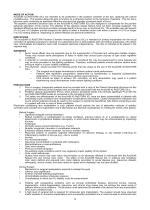
MODE OF ACTION AcrySof® IQ ReSTOR® IOLs are intended to be positioned in the posterior chamber of the eye, replacing the natural crystalline lens. This position allows the lens to function as a refractive medium in the correction of aphakia. This IOL has a biconvex optic containing an apodized diffractive structure that provides increased depth of focus. The aspheric symmetric biconvex optic of the AcrySof® IQ ReSTOR® IOLs are designed to compensate for the positive spherical aberration of the cornea. The effect(s) of this aspheric design feature have not been clinically assessed. The...
Open the catalog to page 3
implantation before attempting to implant intraocular lenses. As with any surgical procedure, there is risk involved. Potential complications accompanying cataract or implant surgery may include, but are not limited to: corneal endothelial damage, infection (endophthalmitis), retinal detachment, vitritis, cystoid macular edema, corneal edema, pupillary block, cyclitic membrane, iris prolapse, hypopyon, transient or persistent glaucoma, and secondary surgical intervention. Secondary surgical interventions include, but are not limited to the following: lens repositioning, lens replacement,...
Open the catalog to page 4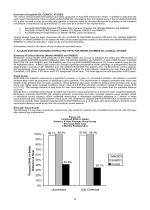
Overview of AcrySof® IOL CLINICAL STUDIES The various clinical studies listed below have been conducted on AcrySof® Intraocular Lenses. In addition to data from the more recent clinical study of the AcrySof® IQ ReSTOR® IOL, the labeling from the original study of the AcrySof® ReSTOR® IOL is also included in order to provide data intended to help you make an informed decision as to whether or not to implant a multifocal or monofocal IOL (a monofocal IOL was used as a control in the original study). 1. 2. 3. AcrySof® ReSTOR® Apodized Diffractive Optic Posterior Chamber IOL (Models MA60D3 and...
Open the catalog to page 5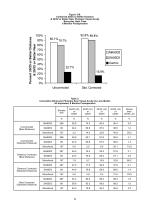
Figure 3-B: Combined 20/25 or Better Distance & 20/32 or Better Near Photopic Visual Acuity Binocular, Best Case 6 Months Postoperative Table 3: Cumulative Binocular Photopic Near Visual Acuity by Lens Model, All Implanted, 6 Months Postoperative Sample size N MA60D3 Uncorrected (Best Distance) MA60D3 Best Corrected (Standard Distance) Distance Corrected (Standard Distance) Distance Corrected (Best Distance) MA60D3 Uncorrected (Standard Distance)
Open the catalog to page 6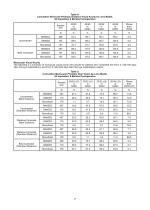
Table 4: Cumulative Binocular Photopic Distance Visual Acuity by Lens Model, All Implanted, 6 Months Postoperative Sample size Best Corrected Monocular Visual Acuity The following is a summary of monocular visual acuity (VA) results for patients who completed the Form 4 (120-180 days after rst eye implantation), and Form 5 (330-420 days after rst eye implantation) exams. Table 5: Cumulative Monocular Photopic Near Vision by Lens Model, All Implanted, 6 Months Postoperative Sample size MA60D3 Uncorrected (Best Distance) MA60D3 Uncorrected (Standard Distance) Distance Corrected (Best...
Open the catalog to page 7
Table 6: Cumulative Monocular Photopic Distance Vision by Lens Model, All Implanted, 6 Months Postoperative Sample size Best Corrected *Statistically signicant difference versus monofocal control Table 7: Cumulative Monocular Photopic Near Vision by Lens Model, All Implanted, 1 Year Postoperative Sample size Uncorrected (Best Distance) Uncorrected (Standard Distance) Distance Corrected (Best Distance) Distance Corrected (Standard Distance) Best Corrected (Standard Distance) Table 8: Cumulative Monocular Photopic Distance Vision by Lens Model, All Implanted, 1 Year Postoperative Sample size...
Open the catalog to page 8
Figure 4: Mean Defocus Curves by Lens Model, Binocular, All Implanted ® These data demonstrate that the ReSTOR® IOL provides a 4.5 diopter amplitude of functional (20/40 or better) vision (from optical innity to approximately 22 cm). Binocular performance of the ReSTOR® IOL was approximately 0.5 lines better for near vision and 1.5 lines better for intermediate vision than the monocular performance of the ReSTOR® IOL. Additionally, the defocus curves were within 1 line among groups when stratied by pupil size (Figure 5). Figure 5: Mean Defocus Curves by Pupil Size Binocular, All Implanted...
Open the catalog to page 9All Alcon catalogs and technical brochures
-
PUREPOINT
2 Pages
-
Vektor
2 Pages
-
NEGENUITY
2 Pages
-
CONSTELLATION®
4 Pages
-
MODEL MA50BM
11 Pages
-
Maintaining Good Eye Health
3 Pages
-
The LenSx® Laser System
12 Pages
-
CZ70BD
7 Pages
-
MODEL SN6AT3, SN6AT4, SN6AT5
23 Pages
-
MODEL SN60AT
9 Pages
-
MODEL MA30AC
11 Pages
-
MODEL MN60AC
13 Pages
-
MODEL SN60WF
15 Pages
-
MODEL SN6CWS
15 Pages
-
NAPHCON A
1 Pages
-
PUREPOINT
6 Pages
-
CONSTELLATION® Vision System
10 Pages


























